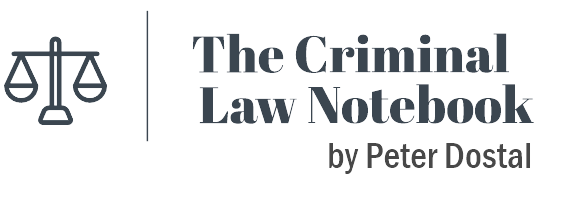Forfeiture of Offence-related Property: Difference between revisions
No edit summary |
No edit summary |
||
| Line 16: | Line 16: | ||
The origin of the property is not relevant to determine whether the property fits the definition. The issue is the relationship the property has with the index offence.<ref> | The origin of the property is not relevant to determine whether the property fits the definition. The issue is the relationship the property has with the index offence.<ref> | ||
R v Trac, [http://canlii.ca/t/fx3pg 2013 ONCA 246] (CanLII)<br> | R v Trac, [http://canlii.ca/t/fx3pg 2013 ONCA 246] (CanLII){{perONCA|Doherty JA}}<br> | ||
</ref> | </ref> | ||
ORP may include the proceeds obtained by the sale of offence-related property.<Ref> | ORP may include the proceeds obtained by the sale of offence-related property.<Ref> | ||
Maple Trust Co. v. Canada (Attorney General), [http://canlii.ca/t/1rn81 2007 BCCA 304] (CanLII), | Maple Trust Co. v. Canada (Attorney General), [http://canlii.ca/t/1rn81 2007 BCCA 304] (CanLII){{perBCCA| Mackenzie JA}}, at para 17 ("...offence-related property extends to the proceeds of sale either by giving the CDSA definition a reasonable interpretation in the context of the scheme of the statute or by incorporating the expanded definition of property in the Criminal Code by reference with the assistance of the Interpretation Act.")<Br> | ||
</ref> | </ref> | ||
| Line 54: | Line 54: | ||
An application under s. 490.1 is not part of a sentencing hearing and so the normal rules of evidence apply, including the presumptive inadmissibility of hearsay evidence.<ref> | An application under s. 490.1 is not part of a sentencing hearing and so the normal rules of evidence apply, including the presumptive inadmissibility of hearsay evidence.<ref> | ||
Faulkner | R v Faulkner, [http://canlii.ca/t/1rsdq 2007 NBCA 47] (CanLII){{perNBCA|Drapeau JA}}</ref> | ||
The standard of proof is on the balance of probabilities. | The standard of proof is on the balance of probabilities. | ||
| Line 61: | Line 61: | ||
Property includes cash and real property.<ref> | Property includes cash and real property.<ref> | ||
R v Trac, [http://canlii.ca/t/fx3pg 2013 ONCA 246] (CanLII) at para 78<br> | R v Trac, [http://canlii.ca/t/fx3pg 2013 ONCA 246] (CanLII){{perONCA|Doherty JA}} at para 78<br> | ||
</ref> | </ref> | ||
| Line 114: | Line 114: | ||
'''Corporation'''<br> | '''Corporation'''<br> | ||
A corporation will be considered "dead" where it is determined to be a "sham, or a front".<Ref> | A corporation will be considered "dead" where it is determined to be a "sham, or a front".<Ref> | ||
R v 2744-5360 Quebec Inc., [http://canlii.ca/t/1n99k 1994 CanLII 4244] (NS SC)<Br> | R v 2744-5360 Quebec Inc., [http://canlii.ca/t/1n99k 1994 CanLII 4244] (NS SC){{perNSSC|Cacchione J}}<Br> | ||
</ref> | </ref> | ||
The standard of proof is on the balance of probabilities.<Ref> | The standard of proof is on the balance of probabilities.<Ref> | ||
| Line 138: | Line 138: | ||
==Other Items== | ==Other Items== | ||
===Vehicles=== | ===Vehicles=== | ||
The vehicle used to transport drugs that were the subject of a CDSA conviction is offence-related property and so can be seized.<Ref>R v Kopp, [http://canlii.ca/t/fpbml 2011 MBPC 74] (CanLII)</ref> | The vehicle used to transport drugs that were the subject of a CDSA conviction is offence-related property and so can be seized.<Ref>R v Kopp, [http://canlii.ca/t/fpbml 2011 MBPC 74] (CanLII){{perMBPC|Martin | ||
J}}</ref> | |||
{{reflist|2}} | {{reflist|2}} | ||
